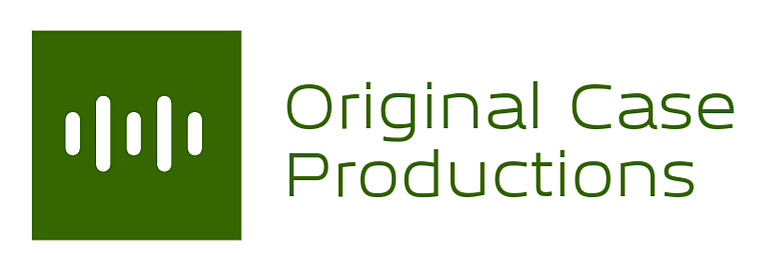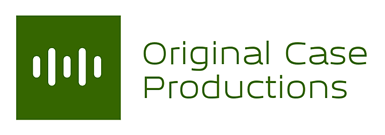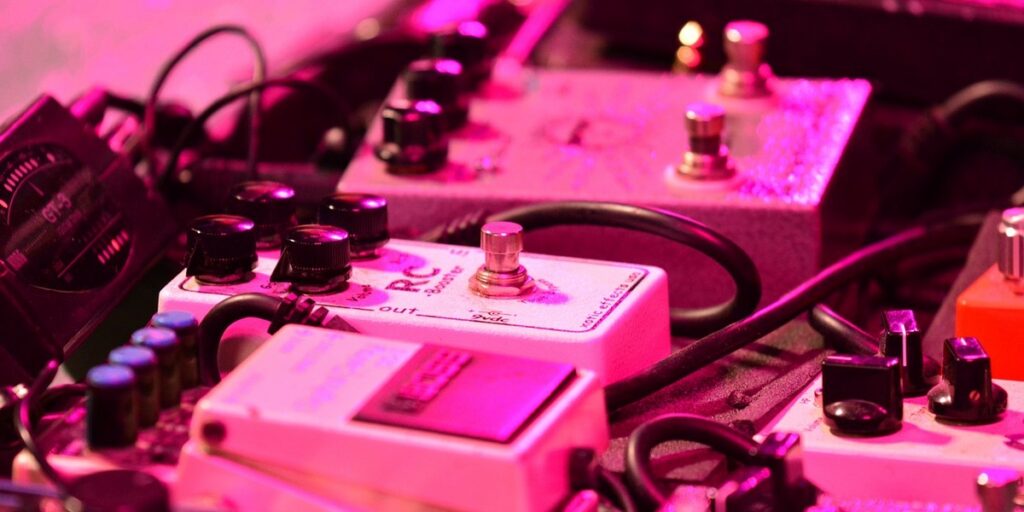Do you want clear guitar tones combining time based AND distortion effects?
One of the best things about the electric guitar is the possibility to manipulate the sound. Many guitar players have one or more stomp-boxes to shape their soul-laden tones. It’s great fun! The question is: How do you get the best out of these guitar pedals and in what order should you place them? The short answer is any way you want! Of course there are no strict rules for fx placement, although some configurations may result in a blown amp! Here are some ideas to help get the best out of your pedalboard.
Clear and clean
From your guitar, the first pedal you plug into will be … (fill in the blank). When you think about it, each pedal effects what’s going into the one that’s coming after it. So if you put a chorus in front of a distortion pedal, you will get… distorted chorus!! If you put it the other way around, you will get… a distorted guitar tone with a chorus effect on top of it. It’s the same with delays. If you put a time based effect in front of a distortion, your clean repeated signals will all be “nicely” mushed up in a heavily distorted soup! If this is what you want, go for it!
If you want a clearer tone, you can think of your signal chain like this:
Guitar → pedals that control dynamics → phase shifting pedals → overdrive/distortion pedals (or amp) → timebased fx → reverb → out of the speaker.
In many cases the pre-amp stage of your amplifier also adds distortion. If you want a clear tone, you can use the fx loop of your amp for time based fx and reverb. The fx loop is placed after the pre-amp stage and in front of the final stage.
For a very clear tone with a lot of room for shaping the distorted signal, without making it muddy, you can try this:
Guitar → volume pedal/compressor → wah wah/phase shifter → overdrive/disitortion/fuzz pedals → amplifier input → through the pre-amp stage → fx loop send → tremolo/chorus/flanger/delay → reverb pedal → fx loop return → through the final stage of the amp → out of the speaker cabinet.
If you want your effects closer to your amp, you can use a remote effects-switcher like the TC Electronic G-System. You can stack all your pedals near your amp in a rack or in a case with short cables running from and to your fx loop. This will prevent a cluttered stage and using long cables. For instance when your amp is in the backline and your pedalboard is at the front of the stage at a gig. You now only have the switcher board in front of you on stage. For recording in the studio, it can also be useful to have your pedals in a rack in stead of on a pedalboard on the floor, so you can tweak at arm height.
Pub gig, garage band style
So what if you don’t have the amount of cables or the right amp to use an fx loop? Or maybe you don’t have the floor space to have all those extra cables running from and to your amp. You can still use the same principle of placement. If you use a clean or slightly crunched channel on your amp, it will not dirty op your time based fx too much. In fact a lot of famous rock records where made using the effect in front of amp method. The way your (pre-)amp colors the sound of your chorus or delay CAN be very beneficial to your sound. This could be way to set up your gear:
Guitar → volume pedal/compressor → wah wah/phase shifter → overdrive/distortion/fuzz pedals → tremolo/chorus/flanger/delay → reverb pedal → amplifier input → out of the speaker.
One thing to bear in mind is that some pedals have a stereo output. For instance, if your final pedal in the chain is a delay or a chorus, you can split the signal going to two different amps. This way you can create a very big and wide sound, with a lot more depth.
Hendrix did it too…
Experiment! Make use of routing mistakes you stumble upon. You might have accidentally plugged into your wah wah pedal the “wrong” way, creating a squeal/scream pedal! Jimi Hendrix discovered this once on stage while performing! After he noticed this routing error, he frowned and went on to make the most out of the “interesting” newly discovered effect by using it a couple more times through the song! So get in there and be creative. Use loops and split signals into parallel paths. Watch out to not plug amps into amps because of impedance problems and overloading that can occur. Stay clear of speaker outputs, unless you use a power attenuator. If you only use inputs and effect loops you should be fine. Use a DI-box to record the unprocessed signal.

all available services on my website!
https://originalcaseproductions.com/#services
Conclusion
So these are some different sounding approaches for setting up your guitar effects. Each type of pedal will effect the next pedal in the chain. It’s up to you to choose the combinations you like best. It helps to decide what kind of sound you are looking for in the first place. Experiment with it and have fun with it!
What’s your idea is about setting up a good sounding guitar rig? I would love to learn how you do it! Please leave a comment below.
Happy hitmaking!
Kees Huizinga

